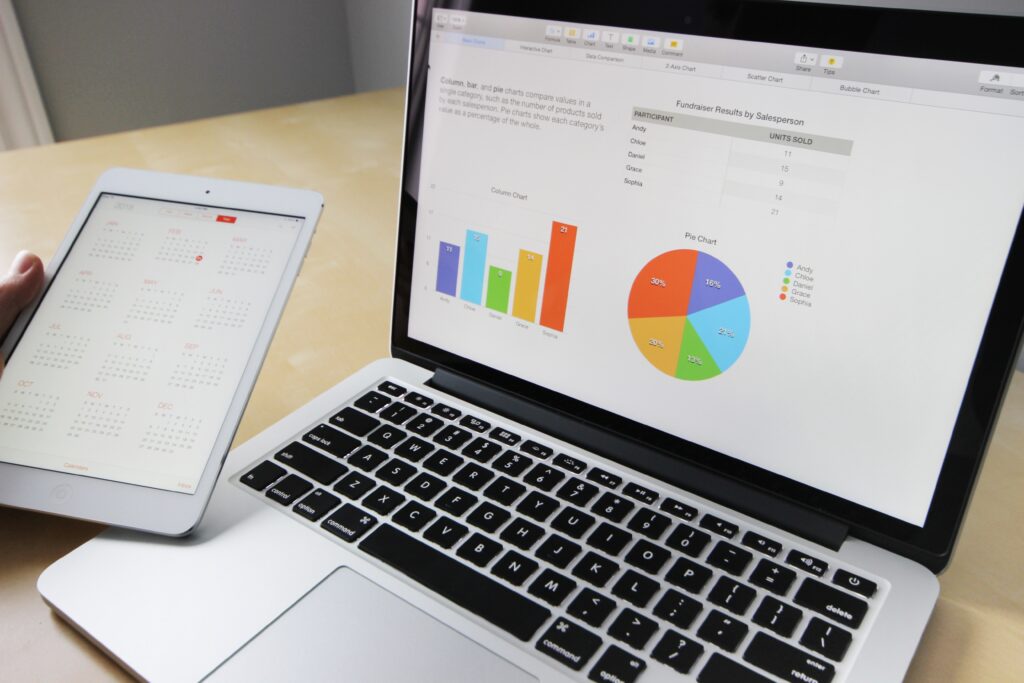Working in marketing, it can be easy to get caught up in how certain metrics are performing. But if you only look at the numbers without context, it can be difficult to tell whether your marketing activity is actually performing well or not.
Vanity metrics are metrics that are easy to measure and interpret, but don’t provide much information about how content is actually performing. They can be particularly dangerous when used alone because they can indicate successful performance, even if your marketing activity isn’t actually hitting its goals.
In order to ensure you don’t fall into the trap of solely relying on vanity metrics to measure performance, you need to understand what they are and what they mean.
What are vanity metrics?
Vanity metrics tend to be numerical values that give you a surface level understanding of marketing performance but are generally not useful for informing future strategies.
The problem that many marketers face is that vanity metrics can make you feel good. A well-performing vanity metric can give you a dopamine hit and a false sense of how your marketing activity is performing.
Context is key
Vanity metrics are a type of data that can make you think your business or marketing strategy is doing better than it actually is.
For example, if your website visitor count goes up by 10%, that doesn’t necessarily mean that more people are visiting your site and buying from you. It could just be because there’s been an increase in visitors overall (which could still be good) but it depends on what your marketing objectives are.
So, what should we focus on instead? Key performance indicators (KPIs) are measures used by businesses to track progress toward specific objectives such as increasing sales, generating leads, increasing return on investment (ROI) etc.
If you have no context to relate your vanity metrics back to, there is no way of knowing whether their performance is actually helping you achieve your overall marketing objectives.
Examples of vanity metrics
The number of likes on a social media post
It can be difficult not to get too excited when social media posts perform well but it’s important to celebrate vanity metrics such as likes within the context of your marketing objectives. It’s important to question why that post has performed well and how you can replicate that performance.
Page views, and website visitors are both examples of vanity metrics
They can be easy to measure and interpret, but don’t give much information about how your business is performing if they’re not analysed within the context of your marketing goals.
The number of subscribers to your newsletter or email list
If you have thousands of subscribers on your mailing list but your open rate or click through rate are comparably very low, this means that you’re probably not actually converting many people and the numbers on your mailing list become far less impressive. It’s great if you can grow your mailing list subscribers, but converting them should be the main goal.
Are vanity metrics all bad?
Although vanity metrics can give a false indication of performance when viewed in isolation, they’re not necessarily bad. In fact, they can be helpful in making quick decisions about whether you should continue with an idea or pivot toward something new.
However, it’s important not to rely on vanity metrics alone, because they don’t tell you much about the long-term viability of your marketing strategy.
In addition, vanity metrics can be dangerous when they’re used as an excuse for continuing to do something that doesn’t serve your business. Vanity metrics become a problem when they are misinterpreted and manipulated to justify decisions that have already been made.
How to use them effectively
Vanity metrics are a great way to measure your progress, but they shouldn’t be used alone. It’s important to keep an eye out for them in your reporting so you know what’s really going on with your business.
Social media management tools are a great way to keep track of your social media marketing performance and create custom dashboards to highlight the most important metrics for your brand. Try a free trial of the social media tool that we use* and use the code GIM20 for 20% off any plan!
Use vanity metrics as a starting point for deeper analysis and always look at them in context with other data points. If you notice that one particular number keeps rising while others fall, this could be an indication that something is wrong with how things are being done or where resources are being allocated within the company.
To keep up to date with the latest in digital marketing, become a Girls in Marketing member to gain access to an incredible community of supportive women in marketing and hundreds of marketing resources, webinars and courses at your fingertips (including a whole topic on managing and reporting marketing data!).
AD | Any links marked with (*) in this blog are part of a paid partnership.




